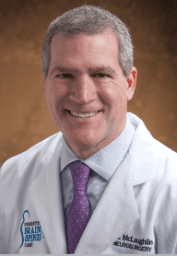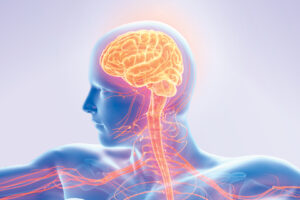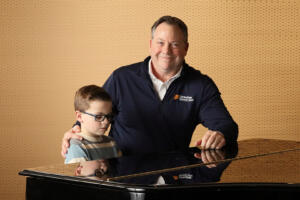We were all shocked and saddened to hear about the 49-year-old female television news reporter who suddenly passed away from a cerebral aneurysm. This sad case compelled many to wonder why these aneurysms happen to seemingly healthy people and how they can prevent them. As a neurosurgeon (who is the same age), I’d like to address this condition which can strike suddenly and without warning.
Surprisingly, about six million people are living with brain aneurysms but only about 30,000 will experience ruptures each year. They are often discovered by brain imaging, such as MRI, or during treatment for chronic headaches, head trauma or certain illnesses. The statistics for people who experience ruptures are grim−about 40 percent will die. Of those who survive, a third will make a successful recovery, a third will have a significant long-term disability and a third will not survive hospitalization after the episode.
How Do Aneurysms Happen?
A cerebral aneurysm is a thin or weak spot (like a blister) that can occur on a blood vessel in the brain. The aneurysm causes the vessel to enlarge and fill with blood. As a result, the blood vessel may begin to bulge and put stress on nerves or surrounding brain tissue resulting in a rupture that can cause fatal bleeding in the brain.
Symptoms
The majority of time there are no symptoms leading up to the rupture until immediately before the event. When there are symptoms, they may be similar to a stroke−severe headache or a ‘brain freeze’ sensation, difficulty speaking, weakness, vomiting and loss of consciousness.
Risk Factors
- The most common age is around 50 years old.
- Family history of brain aneurysms
- Smoking
- High blood pressure or hypertension
- Previous head trauma
- Narcotics use (particularly amphetamines and cocaine)
Treatment
When doctors detect an aneurysm early−before it bursts− they may recommend monitoring and CT or MRI imaging to detect signs of growth or change. If this occurs, surgery is usually the safest and most effective treatment. Decisions regarding management of a brain aneurysm are based on the careful evaluation of the patient’s medical history and short- and long-term risks.
Whether or not a patient survives a brain aneurysm rupture depends on a number of factors−age and overall health, the location of the aneurysm, and how quickly they are properly diagnosed and undergo emergency treatment, which is essential.
MRI or CT angiography testing (brain scan) is strongly advised for anyone with immediate family members who have experienced a ruptured aneurysm. This painless testing is 90 percent effective for aneurysms of 2 millimeters and nearly 100 percent effective for aneurysms larger than 5 millimeters. If diagnosed, your medical team can properly access the most successful treatment solution for you.
Specialized Medical Care for the Nervous System
The Neuroscience Center of Central Jersey, one of the specialized treatment centers at CentraState Medical Center in Freehold, offers neurologic diagnostic, treatment and rehabilitation for injuries or medical conditions related to the brain, spine and nervous system. Treatment services include disease and pain management, neurosurgery and advanced radiation therapy for tumors in the brain. For more information, call 866-CENTRA7 (866-236-8727) or visit centrastate.com/neuroscience.
To find a neurosurgeon or neurologist, check the Physician Finder database at centrastate.com/physicians.
Dr. McLaughlin is a board-certified neurosurgeon on staff at CentraState Medical Center in Freehold. He maintains a private practice at Princeton Brain & Spine Care located at CentraState’s Star and Barry Tobias Ambulatory Campus. He can be reached by calling (732) 333-8702 or visiting princetonbrainandspine.com.






